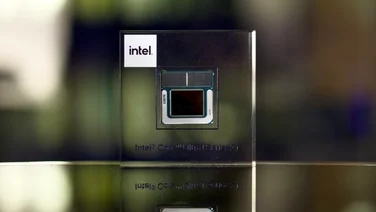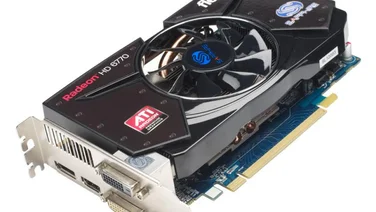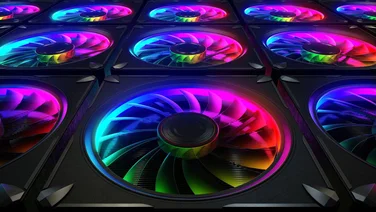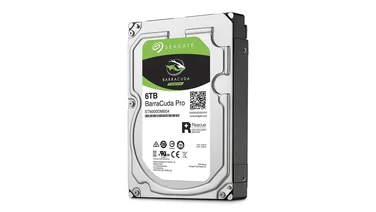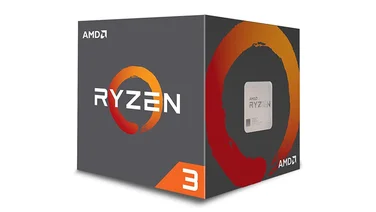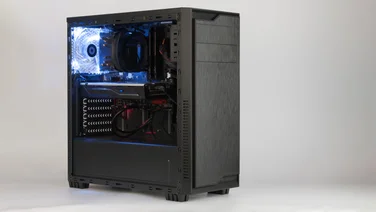To help us provide you with free impartial advice, we may earn a commission if you buy through links on our site. Learn more

- Looks great
- Eight USB ports
- Outstanding BIOS
- Somewhat pricey
- Lack of extra features
The Z370 Gaming Pro Carbon AC is one of those rarest of things: a motherboard that looks rather excellent. All black and grey with some touches of carbon fibre texture on the rear port cover and PCH heatsink, it’s a beautifully designed piece of kit, and that’s even before getting to the gleaming metal around the RAM and topmost PCI-E x16 slots. The primary purpose of this is to reinforce the underlying plastic, so it’s practical as well as good-looking, especially in a Gaming PC setup.
It’s still somewhat pricey, so MSI will have needed to match these looks with some appropriate features. All is well on the internal connectivity front: there are three PCI-E x16 slots, capable of running multiple GPUs in either two-way SU or three-way CrossFire, plus three PCI-E slots for other expansion card types. Four DDR4 RAM slots provide room for up to 64GB of dual-channel memory, running at frequencies up to an impressive 4,000MHz. Two Optane-ready M.2 slots are included, too, and either can be fitted with a little passive heatsink to help prevent the installed drive from throttling itself.
A total of six four-pin cooling headers means watercooling is easily doable, and for even flashier PC builds, there’s some pretty extensive RGB lighting support as well: four LED connectors on the motherboard itself, with three different extension cables for RGB hardware included in the box.
Naturally, the Z370 Gaming Pro Carbon AC is more than capable of lighting up your PC case by itself: the rear panel cover and PCH heatsink both glow with RGB hues, and on the rear, strips of LEDs run down the left and right edges. This can look somewhat ostentatious next to the sophisticated black/grey colour scheme, but choosing your own shades is all part of the fun. There’s even a dedicated button at the lower edge of the motherboard for quickly switching between colours.
This motherboard’s star feature isn’t the lighting, however. It’s the bundled 802.11ac Wi-Fi card, which provides dual-band (2.4GHz and 5GHz) connectivity at up to 867Mbit/s, plus Bluetooth 4.2.
The downsides are twofold: one, you must install it yourself, and two, doing so will cost you a PCI-E slot. If you’re using a dedicated GPU – and at this budget we’re assuming you are – one of the x1 slots will also be covered up by all but the slimmest graphics cards, so it does feel as if you’re losing slots awfully quickly. Still, we’re certainly not complaining about having one of the fastest Wi-Fi standards right there in the box, and let’s not forget that holding expansion cards are the PCI-E slots’ entire reason for being.
There’s more good news on the back panel: 7.1 3.5mm and S/PDIF audio outputs, Gigabit Ethernet, and both an HDMI port and a DisplayPort output – though again, it’s unlikely that many will be using integrated graphics on a motherboard such as this. Besides the good old-fashioned PS/2 port, there are also a very generous eight USB ports, comprising two USB 2, four USB 3, one USB 3.1 and one USB Type-C. Install the Wi-Fi card, and you’ll also have a couple of antennas poking out the back of your case.

We wish there were just a few more extras, however. The LED colour switching button is fun, but considering this board can be used for overclocking, an internal power and/or reset button wouldn’t have gone amiss, and there’s no two-digit POST code display for troubleshooting – just a few tiny LEDs that can vaguely point towards an issue with certain components. Even if these things aren’t strictly necessary, we don’t think they’re too much to ask for at £170.
Fortunately, MSI still has what we see as the best BIOS in the business – or the most user-friendly, at least. Advanced Mode’s intuitive and surprisingly colourful grid layout makes it much easier to find what you’re looking for than the plain menus favoured by ASRock, Gigabyte and Asus, and the version included here – Click BIOS 5 – has a clever way of offering fine-tuning controls for experts while preventing novices getting lost in all the different options. Essentially, the overclocking menu defaults to a somewhat simplified list of the most vital controls, but clicking OC Explore Mode will open up a much more detailed list. It’s the best of both worlds.
EZ Mode, on the other hand, keeps it simple entirely, including Game Boost, the BIOS’s one-click overclocking tool. Applied to our Core i7-8700K, it set clock speeds to target 4.8GHz, and although the performance gain was mild, it seemed to be a remarkably well-judged tweak overall, with stable voltages and no excessive temperature spikes.
As for manual overclocking, that works out well, too: as with the other Z370 boards on test, the highest we could comfortably get the Core i7-8700K was 5.0GHz. This took a few attempts, as leaving the CPU voltage on its Auto setting didn’t cut it, but once we changed it to 1.4V, everything was stable.
Buy the MSI Z370 Gaming Pro Carbon AC now from Scan
MSI Z370 Gaming Pro Carbon AC review: Verdict
Even without a few bells and whistles, then, the Z370 Gaming Pro Carbon AC is a fantastic Coffee Lake motherboard. It’s commendably upgrade-friendly, serves well for external connectivity, comes with a great wireless card and has a truly outstanding BIOS – and is cheaper than the Z370 Taichi to boot. For those who want an ATX motherboard but don’t want to spend more than £200 on it, look no further.

